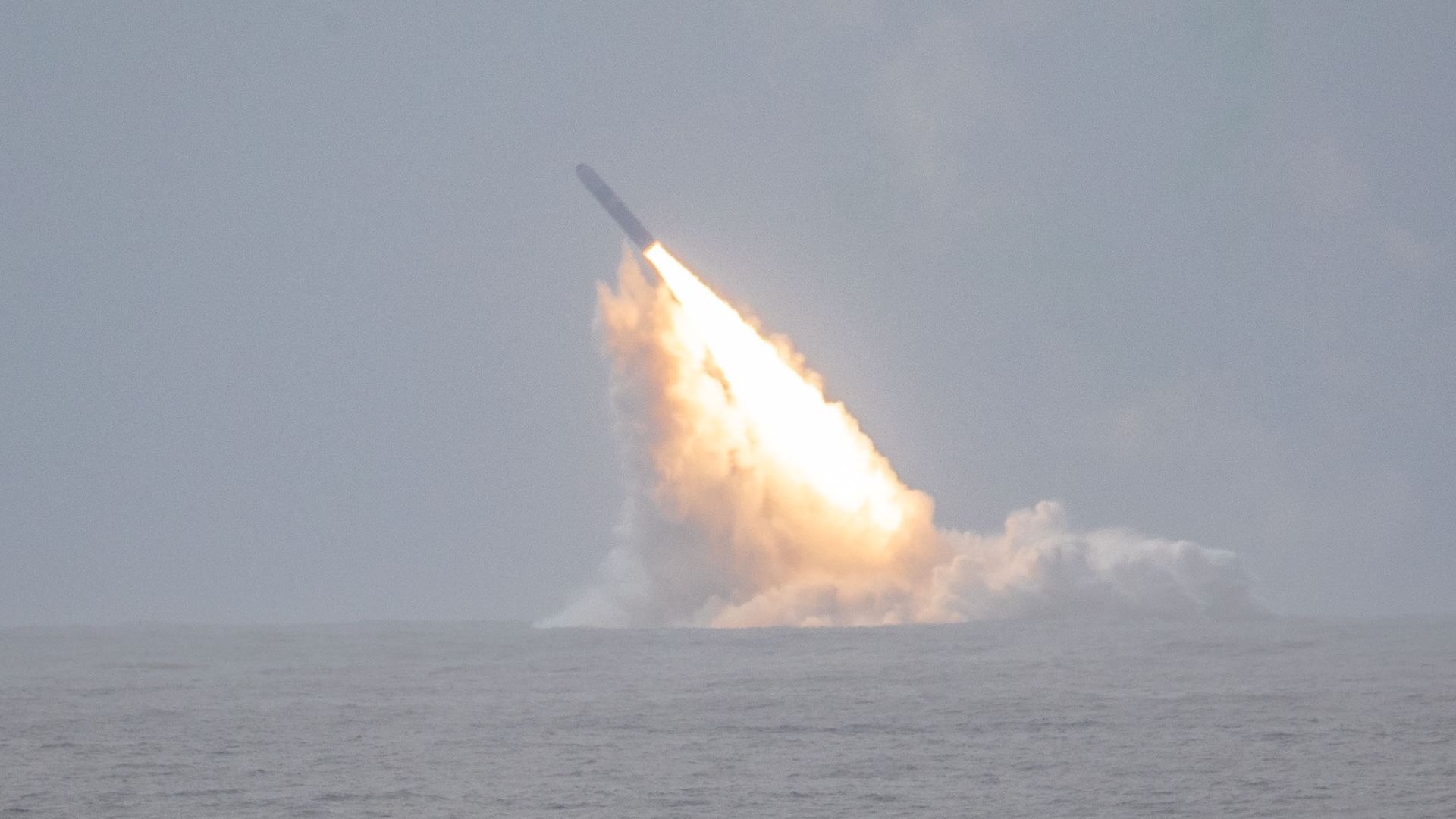
THE USS LOUISIANA IS OUT OF THE SHOP AND READY TO RETURN TO WORK PATROLLING THE SEAS FOR THE U.S. NAVY. AND THERE’S NO BETTER WAY FOR THE CREW OF AN OHIO-CLASS BALLISTIC MISSILE SUBMARINE TO PROVE IT’S READY, THAN WITH A TEST LAUNCH OF ITS MOST VALUABLE WEAPON: A TRIDENT II.
THE NAVY SAYS THE LAUNCH WAS PREVIOUSLY SCHEDULED AND NOT MEANT AS A MESSAGE TO ANY PARTICULAR COUNTRY. LAUNCHES LIKE THIS ARE PART OF WHAT THE NAVY CALLS A DEMONSTRATION AND SHAKEDOWN OPERATION, OR DASO. DURING DASO 32, THE TRIDENT II MISSILE THE LOUISIANA LAUNCHED WAS JUST A TEST MUNITION, MEANING IT WASN’T ARMED. IT WAS THE 191ST SUCCESSFUL LAUNCH OF THE TRIDENT THOUGH, SHOWING THE UNMATCHED RELIABILITY OF THE WEAPON SYSTEM.
THE LOUISIANA AND OTHER NUCLEAR ARMED SUBMARINES MAKE UP PART OF WHAT’S CALLED THE NUCLEAR DETERRENT TRIAD. IT’S A LAYERED APPROACH THE UNITED STATES USES TO PROJECT POWER GLOBALLY, AND HOPEFULLY KEEP ENEMIES IN CHECK.
THE SEA-BASED LEG OF THE TRIAD ACCOUNTS FOR AROUND 70% OF THE U.S.’ DEPLOYED STRATEGIC NUCLEAR WEAPONS.
THE AIR FORCE TAKES CARE OF THE OTHER TWO LEGS OF THE TRIAD, WHICH INCLUDE LAND-BASED INTERCONTINENTAL BALLISTIC MISSILES AND LONG-RANGE STRATEGIC BOMBERS, LIKE THE B-52 STRATOFORTRESS.
B-52s FIRST STARTED FLYING IN THE 1950s, BUT THEY’VE BEEN UPGRADED MULTIPLE TIMES SINCE THEN. NOW, THEIR NUCLEAR-CAPABLE CRUISE MISSILES ARE GETTING AN UPGRADE TOO.
A NEWLY RELEASED REPORT FROM THE PENTAGON SHOWS THE AIR FORCE AND DEFENSE CONTRACTOR RTX COMPLETED SEVERAL TESTS OF THE NEW, AND STILL MOSTLY CLASSIFIED, LONG-RANGE STANDOFF MISSILE.
IMAGES OF THE NEW LRSO AREN’T PUBLICLY AVAILABLE, BUT WE KNOW THE MISSILE SUCCESSFULLY PERFORMED THE BASIC TASKS OF A CRUISE MISSILE, SEPARATING FROM THE PLANE, POWERING UP, ARMING, AND THEN FLYING TO A DESIGNATED TARGET.
THE LRSO WILL LIKELY BE STEALTHIER THAN ITS PREDECESSOR. IT’S ALSO REASONABLE TO ASSUME IT WILL BE ABLE TO COMMUNICATE WITH THE PLANE THAT LAUNCHED IT, AND OTHER ASSETS IN THE BATTLESPACE, TO SENSE AND POTENTIALLY AVOID THREATS AS NECESSARY. THESE CAPABILITIES ALREADY EXIST IN CONVENTIONAL CRUISE MISSILES BUT PUTTING THEM ON A NUCLEAR DEVICE SENDS A MESSAGE TO WOULD BE ENEMIES–DON’T.







